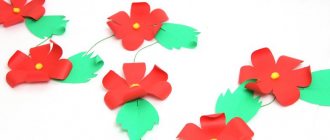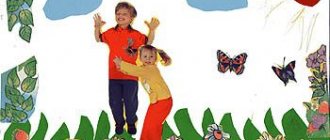Plants for landscaping and decoration
When choosing plants for a children's room and preschool institutions, first of all you should pay attention to their phytoncidal properties. Such plants are capable of producing biologically active substances that help fight harmful microorganisms and suppress their development.
Plants decorate and benefit
As a result of research, it has been proven that in rooms with plants with phytoncidal properties located in them, there are 50% fewer pathogenic organisms than in similar rooms without flowers.
With the right selection of indoor plants, you can restore the body's defenses and increase immunity in half an hour.
Aspidistra
Aspidistra An unpretentious plant that does not have a dormant period. Lithuania plants are very beautiful and large. Depending on the species, the elongated leaf blades can be painted pure green or may have blotches of a darker tone scattered over the entire surface.
To obtain new specimens, it is necessary to divide the bush of the mother plant. This method is quite simple and does not require any effort. Planted plants quickly adapt to a new location and quickly begin to grow. It is better to propagate in early spring, when the aspidistra begins its period of active growth. A small section with its own root system and several leaves is separated from the mother plant. At first, the potted plant is kept in a warm, humid room.
Aspidistra with green leaves is unpretentious to light levels, soil composition and soil moisture. The variegated plant is more capricious.
It is advisable to grow the variegated form of aspidistra in a well-lit place, since due to insufficient light the pattern on the foliage may disappear!
Geranium
Geranium A beautifully flowering and strong-smelling plant, it is in second place, after Chlorophytum crested, in terms of the presence of beneficial properties that have a phytoncidal effect.
The plant is considered a very powerful air purifier, enriching it with oxygen.
Geranium leaves are used by traditional healers as a remedy for the treatment of colds and runny nose.
However, the strong smell emanating from geranium foliage can cause an allergic reaction in many, so the plant must be grown with caution. Before breeding in a nursery, you need to make sure that the child is not allergic to it.
Hibiscus
Hibiscus An ornamental evergreen plant has recently gained universal popularity due to its gorgeous flowering, even though the flowers on hibiscus last for exactly a day.
The leaf blades are dark green. A common variety in indoor floriculture blooms with red flowers. Thanks to breeding work, many varieties with different flower colors have been developed: yellow, white, orange. There are even specimens with two-color flowers.
When fully bloomed, the flowers look like roses. The plant likes frequent watering and fertilization.
Due to its large size, it is recommended to curb the growth of hibiscus by pruning. However, you need to do this carefully, because every time you shorten the branches of a plant, you can lose its flowering.
For propagation, slightly lignified cuttings are used, which easily take root both in water and immediately in the ground.
Hippeastrum
Hippeastrum An ideal plant for children's rooms and preschools. The vegetative part of the hippeastrum releases substances into the air that have a detrimental effect on bacteria and viruses.
Like no other plant, hippeastrum contains alkaloids - useful substances and compounds that have a positive effect on the nervous system.
Recommended for the owner of the room who tosses and turns for a long time and cannot sleep. Heppeastrum acts on a subconscious level and improves children's sleep. Recommended for hyperactive children.
Fragrant herbs
Fragrant herbs Together with overly active and restless children, it is necessary to grow fragrant herbs. Many pediatricians advise placing a small flowerpot with peppermint, lavender and lemon balm in the room. This composition can be confidently called a living analogue of an aroma lamp.
And when the kids grow up, they can independently pinch off a couple of leaves of healthy fragrant herbs from their garden and add them to tea.
It is necessary to give the child complete independence in caring for his impromptu garden.
A composition of fragrant herbs will fill the air with soothing aromas, create a warm, relaxing atmosphere and cleanse the air of harmful impurities.
And herbs reproduce very easily - by seeds. You can rejuvenate the bushes and plant new plants from time to time.
Kalanchoe
Kalanchoe This is a plant that must be grown in a nursery or in a house where children's voices are heard.
Kalanchoe has powerful phytoncidal properties. By growing a plant on the windowsill, you provide yourself and your family with the necessary medicines that are harmless to the body and have an effective effect on colds and respiratory diseases.
Rubbing a Kalanchoe leaf can cure a runny nose in a matter of days, which cannot be said about the effect of medications that may not achieve the desired effect.
Arabian coffee
Arabian coffee Under natural conditions, the plant reaches 8-10 m in height. Cultivated species cannot please with such rapid growth, but this is not the most important thing, because when grown at home, not every owner will be able to provide it with so much space.
The bark of the small tree is covered with light green, slightly gray bark. Opposite leaves are located on drooping, flexible branches. The leaf blades are attached to the branches by short petioles.
Green coffee leaves purify the air and enrich it with beneficial substances.
Laurel
Laurel Laurel is a small shrub whose branches are densely covered with dark green foliage. When rubbed, the shiny foliage thins out its unique aroma. Flowering is long lasting. It blooms with small flowers with yellow petals.
Under natural conditions it can be found in the Crimea and the Caucasus. The indoor form of laurel reaches a height of 2 m, and in natural growing conditions the tree grows 6 m in height.
Laurel must be grown, as the foliage releases beneficial substances that destroy bacteria.
In addition, the unusual tree has many other advantages. The substances included in the composition and released into the air have a detrimental effect on the tuberculosis bacillus.
The leaves help treat sore throats and inflammation in the mouth, so it’s not even a sin if a child picks a leaf from a tree and chews it a little. This will not affect the baby's health in any way.
In spring and summer, it is preferable to grow laurel on a balcony or terrace. It is advisable to provide him with a flow of fresh air. And laurel propagates very easily - by cuttings.
Lemon tree or citrus garden
Lemon tree or citrus garden You definitely need to plant some kind of citrus tree. And it doesn’t matter whether this tree is a lemon, a tangerine or an orange, the important thing is that it is very useful for children.
Each of the citrus trees contains essential oil, which has bactericidal properties.
And how beautiful the plant is during flowering! In addition, during flowering, the lemon tree thins out such a wonderful aroma and releases substances into the air that have a calming effect on the nervous system.
Therefore, growing citrus trees is recommended in a nursery owned by an overly impulsive and irritable child. Citrus trees help solve the problem of insomnia.
Many parents are dejected that there is a non-flowering tree growing in the room. There's nothing wrong with that. Not only the fruits and flowers of exotic plants emit beneficial substances; the leaves of the plant are also endowed with similar properties.
If at the moment you want to enjoy the aroma of citrus trees, it is recommended to rub a leaf in your hands and feel this captivating aroma.
Myrtle
Myrtle During flowering, myrtle is covered with numerous snow-white flowers. Its flowering has a calming effect on a person and calms the nervous system. That is why it is recommended to grow myrtle in children's institutions.
The aroma of myrtle can relieve daytime fatigue and help the body recover from stressful situations. It is useful for schoolchildren because it relieves fatigue and stress received during classes.
For very restless children and children suffering from insomnia, myrtle helps improve sleep.
Myrtle aroma relieves severe anxiety, has a relaxing effect, and relieves excessive excitement. It helps insecure children (and adults) to get on their feet and feel confident in their abilities.
Fern
Fern Fern is an evergreen plant with interesting leaves, not even leaves, as we usually call them, but with branches with shoots.
It is recommended to grow ferns in those houses whose owners would like to feel more confident in their abilities.
The plant helps protect against stress. By growing a fern, it will help you not waste your time; it will help you plan your day in such a way as to spend it profitably, leaving time for rest.
Necessary for those who are unable to decide what is most important to them. Fern helps to prioritize and highlight the main things, placing emphasis on them.
Chlorophytum crested
Chlorophytum crested The plant is widespread and is found in almost every gardener's home, educational institutions, and kindergartens. Chlorophytum crested is an unpretentious plant that can purify the air 100%. It is used as a natural filter.
Green or green-white elongated leaves of chlorophytum can cleanse the room of harmful impurities. They have an effect on pathogenic bacteria and viruses.
Scientists have found that in children's rooms where chlorophytums are grown, children are much less likely to get colds and flu.
Chrysanthemum
Chrysanthemum A beautiful flowering plant is a necessary element of children's room decor. The plant not only disinfects the air, but also filters air flows well, freeing them from dust and impurities.
It is recommended to grow plants in every home or garden plot, as it is believed that chrysanthemum growing in the house protects the owner from the evil eye.
Usambara violet
Usambara violet
Uzambara violet A lot can be said about violets. Uzambara violet is the queen among all indoor flowers. Thanks to such high popularity and demand, a huge number of varieties have been bred that delight the eye not only with variegated, multi-colored foliage, but also with huge, simple, double flowers. There are also chimera violets.
If the space is limited, you can collect a large collection of mini-violets. If it is not possible to grow plants, you can buy hanging varieties and grow them in a small hanging pot. Anyone who once has a violet in their home will subsequently not be able to refuse to purchase more and more new varieties.
Violet has a beneficial effect on the nervous system, calms and gives peace. The warm tones of flowers soothe, give a positive mood, and cleanse the air of various negativity and dust. Looking at a bouquet of gorgeous flowers, you can admire them for hours.
Ficus
Ficus This plant was one of the first to be studied by botanists for the effect it has on the atmosphere of the house and human health. During the research, it turned out that the beneficial substances released by the plant into the air purify it of harmful impurities, for example, phenol, formaldehyde, benzene, and trichlorethylene.
Ficus leaves contain enzymes that saturate the air with oxygen. Thanks to them, absorbed harmful substances are converted into amino acids and sugar.
Cyclamen
Cyclamen Plant of creative people. It is recommended to place it in a room with an older child, as cyclamen can awaken hidden creative talents in a child.
The plant helps to find a common language and has a unifying effect, therefore it is recommended for growing in kindergartens and in groups of children.
In addition, children's institutions practice planting chlorophytum curica and cyclamen - two plants that are grown in tandem. As a result of decorating a room with these flowers, the air in the room is noticeably purified and children's creative abilities are revealed, which can be revealed in the process of collective work.
Whatever plants parents choose to decorate the children's room, you must first find out their beneficial properties that they have on children and think about how this or that plant will be useful for the child. In children's institutions, it is recommended to grow plants that are considered safe for children and are approved for growing in institutions.
Annuals: When to Plant Annual Flower Seeds in Open Ground
Annual flowers have another very important indicator, such as their tolerance to cold...
- Frost-resistant flowers can be planted as soon as the soil is thawed enough to be dug in and the soil temperature does not drop below -4°C.
- Medium-hardy flower seeds can be planted no earlier than the ground has warmed up enough; they can withstand light frost and will most likely be fine.
- Heat-loving plants should not be planted until the danger of frost has completely passed. Any temperature below 4 C will result in plant death.
See our Flower Planting Guide for a breakdown of each flower's hardiness level.
If you want to have your warm- and medium-hardy annual flowers in the garden as early as possible, then you need to sow them indoors (discussed further at the bottom of the page) and transplant them into the garden when the air temperature is more favorable.
If you want to learn how to plant flower seeds (annual or perennial) outdoors, check out our next section...
Vegetable garden in kindergarten: rules of organization
In order to create a vegetable garden in a kindergarten, it is necessary to determine a place on the territory of the kindergarten that would be located in a lighted space. A vegetable garden in a kindergarten has its own design features.
The size of the garden in a kindergarten is influenced by the local conditions of the kindergarten's location. But, it is desirable that each child has at least 0.5 m² of garden space.
To make it more convenient for children to reach the middle of the bed with their hands, the width of the bed should not be more than sixty centimeters. The length of one bed is approximately three meters.
To prevent water from draining from the garden bed when watering, you can make a wooden frame. A distance of fifty centimeters is left between the beds so that children can freely pass between them without damaging the plantings.
A garden in a kindergarten must also have a main path at least one meter wide, thanks to which children can walk to the beds, and the teacher can conduct organized educational activities and observations.
A table and bench are required. There, children will be able to relax after completing work assignments, observe plants and engage in joint activities with the teacher.
How to Plant Flower Seeds: Where to Buy Seeds
Now that you know when and how to grow indoor and outdoor plants from seeds, it's time to collect some seeds. To choose the flowers you'd like to grow, check out our Flower Planting Guide.
When growing flowers from seeds, bulbs, cuttings or transplants, always purchase your planting material from a safe place to ensure the following:
- Do you know what kind of flower or plant you planted?
- Flowers or seeds come from a healthy source (i.e. they are properly matured)
There are several places to buy your seeds both online and offline...
- Your neighbors. Are you impressed by your neighbor's flower garden? Ask them where they get their seeds or seedlings. They may even give you free flowers the next time they divide their perennials.
- Local nurseries or garden centers
- Seed catalogs (offline and online).
Why do you need a vegetable garden in kindergarten?
A vegetable garden in a kindergarten is needed to introduce preschoolers to nature and its seasonal changes.
In addition, a vegetable garden in a kindergarten and the feasible work of children on its territory influence the formation of elementary environmental concepts in preschoolers.
A vegetable garden in a kindergarten is also an opportunity to see the results of your work. Joint work in the garden provides an opportunity to learn responsibility, contributes to the formation of work skills and the unification of the children's team. And, of course, a vegetable garden in a kindergarten and work in the fresh air help preserve and strengthen the children’s health.
Rules for landscaping a children's room
By caring for their green spaces, a child prepares for adulthood and learns to care for all life on Earth.
Having studied biology at school, we all know that plants not only absorb carbon dioxide, but also oxygen. Therefore, landscaping in a children's room should be done in accordance with the age of the child and depending on the area of the room.
Rules
- Until the child is six months old, it is not recommended to place any plants in the room at all, since green pets put an additional burden on the baby’s immune system.
- In the room of a six-month-old child, you can already place the first indoor flowers. You should not grow strong-smelling ones; for example, you should not decorate your room with geraniums. At this age, kids are interested in everything, so each plant should be located in the visibility zone, but out of reach, so that the child can look at the flower, but cannot “taste it for a tooth.”
- At the age of about a year or one year and a couple of months, toddlers are already trying to take their first steps. It is clear that they will want to get to know the flowers better. Therefore, the ideal solution for landscaping a children's room at this age would be hanging flower pots. You can place flowers on shelves located on the wall.
- Ages from 2 to 5 years are characterized by increased activity. The guys are interested in everything and they belong to the “why” category. Green plants will help your baby learn about the world around him.
By caring for his green spaces, a child prepares for adulthood and learns to treat all life on Earth with care.
Parents using the example of the Uzambara violet, aspidistra. geraniums or ficus will be able to explain the process of plant development. In addition, a child can be introduced to work by learning how to care for indoor flowers.
When to Plant Flower Seeds
The timing of indoor planting is really important... until you understand this: seedlings can only be planted outdoors when they are strong enough and have an established root system. You should also take into account the climate: you cannot plant flowers in open ground while there is a possibility of frost.
Perennial bulbs have some special planting requirements. See our how, where and when to plant flower bulbs page (coming soon) for more information.
Sowing flower seeds in open ground is a completely different matter, and the timing of planting depends on whether your flower is an annual or perennial plant
- Perennial flowers
- annual flowers
Perennial Flowers: When to Plant Perennial Flower Seeds in Open Ground
Perennial flowers should be planted from seed in one of two periods: early spring or late fall. Planting in early spring will ensure that your plants' roots have enough time to grow big and strong and have the strength to survive the winter.
But will planting in late fall be detrimental to my plants before they have a chance to grow? Covering the seeds provides the necessary protection for the plants, and the seeds will remain dormant until spring awakening.
Planting in late fall serves another purpose: many perennial grass seeds need a moist, cool period to germinate (a process called "Lamination"). Performing spring sowing for perennial plants with such a vegetative cycle will require more active participation on your part.
Despite the fact that learning how to plant flower seeds in the spring is much more difficult than it might seem at first glance. You need to prepare and be patient. You need to first mix your seeds with vermiculite and evenly wet the mixture until it has the moisture content of a wrung out sponge. Place the mixture in a tightly sealed container or other airtight container and refrigerate for 2 ½ to 3 months. Obviously, spring sowing is not a spontaneous event and is based on the planned planting date.






